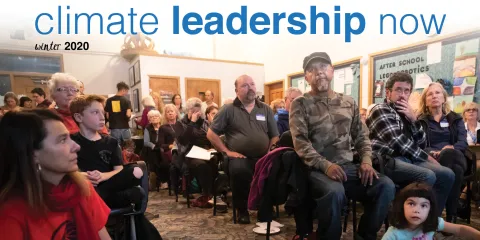
Linnton residents packed the room of a community forum focusing on how prolonged ground shaking could destabilize Oregon’s Critical Energy Infrastructure Hub. Today, about 90 percent of the liquid fuel in Oregon, and 100 percent of the jet fuel for Portland International Airport, come through the hub.

We need a new deal on climate change. When President Franklin Delano Roosevelt launched the original New Deal in the midst of the Great Depression, he was using a card game analogy for the American people, saying: You have been dealt a bad hand by crooked system; let's start over and deal a new hand to working people.
When it comes to the climate a lot of people are drawing on this analogy again, but this time the issue is not economic collapse -- it’s climate collapse. It is not about global warming alone but about the intersectional issues like colonialism, racism, poverty, and class, which all feed into the reasons we call this a ‘climate crisis’. People are demanding a new New Deal, which is now known as the Green New Deal. The Green New Deal is a concept, for now, and is built on several important principles:
To tackle the climate crisis we need a massive transformation of the energy system by replacing fossil fuels with renewable sources, increasing energy efficiency, and building renewable energy infrastructure.
To mobilize to the scale needed a broad base of support is required, so a coalition of working people, people of color, labor unions, environmentalists, and businesses need to come together to work toward mutual benefit.
That the current economic system is not fair, hoarding wealth at the top of the financial ladder, where policies have historically discriminated against people based on race.
And, that there is a history of environmental injustices, also based on race and class, in our society that we have a moral obligation to repair.
It's hard to digest today's climate news, with signs of a climate system in chaos all around us, from fires in Australia to floods in Indonesia. Sadly, we also see widening divisions along class and racial lines with outbursts from hate groups across the country, and increasingly in Multnomah County. While it can be hard to find hope in the midst of such trying times, initiatives like the Green New Deal give me hope and inspiration for what’s next.
If we are to deal a new hand to the planet and future generations of repair, healing, and hope, we need to embrace the new way of thinking that acknowledges and creates strength from intersectionality and complexity.
- John Wasiutynski, Office of Sustainability Director

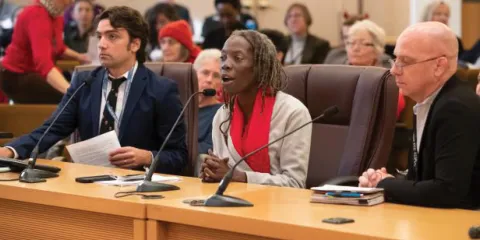
The Board of Commissioners opposed any new and expanded infrastructure for transporting or storing fossil fuels in Multnomah County by passing a resolution in November. The measure also supports the County’s efforts to explore requiring industry to bear the full cost of potential damages caused by their fossil fuel infrastructure. (Climate Action Plan, Action 3G)
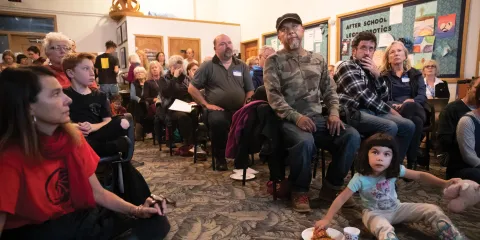
Commissioner Meieran and Commissioner Jayapal focused on how prolonged ground shaking could destabilize the Critical Energy Infrastructure Hub, a six-mile stretch of fossil fuel tanks along the Willamette River's edge, and pose a major threat to human health and the environment. (Climate Action Plan, Action 3G)
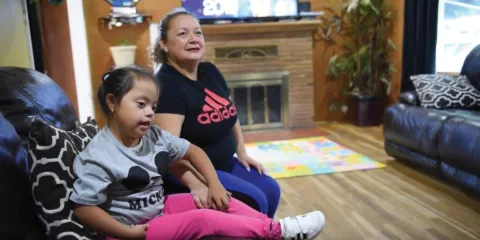
After being quoted a cost-prohibitive $18,000 to have her house insulated, Maricruz Caravantes thought her family, including twin daughters with asthma and are prone to bronchitis in the winter, would have to make do. That is, until she heard about the Department of County Human Services’ Weatherization program. (Climate Action Plan, Actions 1C & 1F)
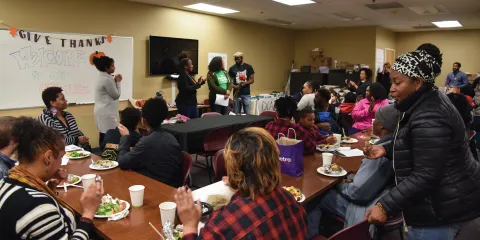
Multnomah County’s Racial and Ethnic Approaches to Community Health — REACH — program teamed up for a second year with the Black-owned farm Mudbone Grown to provide weekly produce boxes to Black and African American families. More than a dozen families gathered to celebrate the final weeks of their community-supported agriculture program.(Climate Action Plan, Actions 12B & 12D)
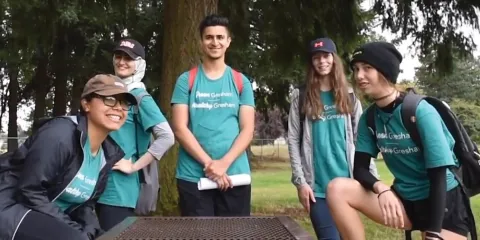
Growing tree canopy in Gresham has myriad health and climate benefits; growing skills of the team members who are helping to make it happen is among them. Meet the SummerWorks Gresham Tree Team Meet the SummerWorks Gresham Tree Team who is identifying which areas in Gresham would most benefit from more trees. (Climate Action Plan, Action 13A)
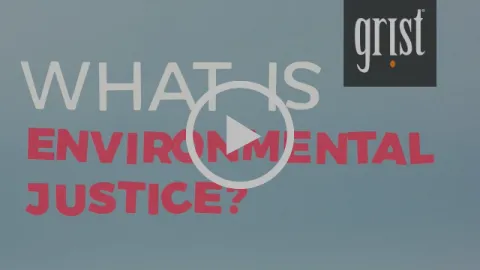
Watch the video: We already know that pollution and climate change negatively affect people’s health and quality of life. We're becoming more clear than ever about which people are most exposed and impacted.

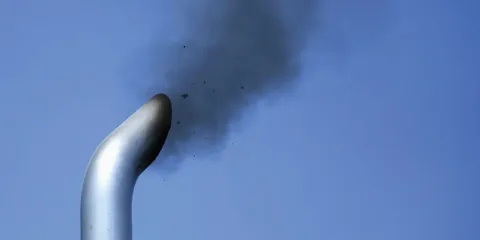
African-Americans, Hispanics exposed to more air pollution than whites: A study looked at who is exposed to fine particle pollution -- responsible for about 100,000 American deaths a year -- and how much different races are responsible for the pollution based on their buying, driving and living habits.
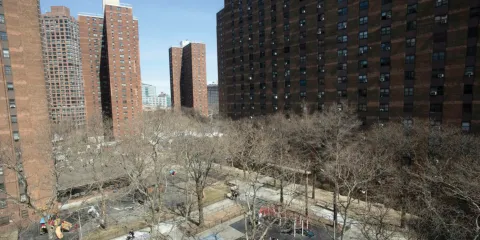
Neighborhoods With More People of Color Pay Higher Energy Bills: Not only are residents of minority neighborhoods paying more of their income for energy bills, but federal government housing policies are a huge part of the reason why.
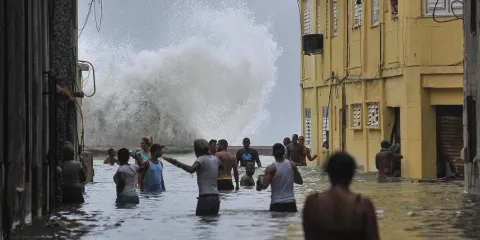
Climate change is forcing one person from their home every two seconds, Oxfam says: Climate-fueled disasters have forced about 20 million people a year to leave their homes in the past decade -- equivalent to one every two seconds -- according to a new report from Oxfam.
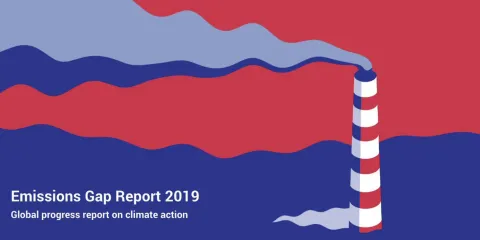
The United Nations Environment Programme Emissions Gap Report analyzes where we are and where we need to be. Reflecting on the report’s overall conclusions, it is evident that incremental changes will not be enough and there is a need for rapid and transformational action.

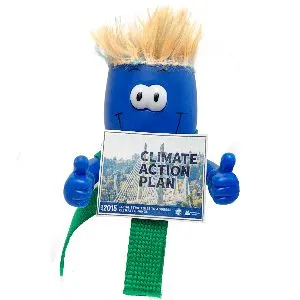
Email your burning climate change-related questions to CAPPY, the Climate Actin Plan mascot, at sustainability@multco.us, and it may appear in next quarter's Climate Leadership Now newsletter!
Q: Dear CAPPY, We don’t have power plants and refineries like some communities, so how is environmental justice an issue in Multnomah County?
A: While it is true that Multnomah County doesn’t have the same scale of challenges as other fenceline communities around the county, low income communities and communities of color do experience harm from their environment in Multnomah County at a higher rate than whiter, wealthier residents. These environmental harms impact the health and wellbeing of folks who are already vulnerable to and experience health inequities and social injustice.
One example of a local environmental justice issue is diesel particulate emissions from trucks, which is a major air quality issue in Multnomah County. Communities that are located closer to highways and commercial/industrial corridors are exposed to this pollution at far greater rates. And, the people who live near these facilities are more likely to be from low income communities and communities of color. This is not a coincidence. As in many cities around the County, the Portland region has a painful history of using its authority to site freeways (I-5, I-205) within communities of color.
Another example can be illustrated by utility and household bills. Lower income and households of color spend more money on home heating and transportation fuels as a percent of their household budget. This inequity is the result of fewer quality housing options, and spending more money on transportation fuels due to living farther away from economic opportunities, and living in areas of the County with less reliable transit. In contrast, whiter, wealthier households use more home energy overall, but spend less as a percentage of their budgets.
These and other environmental justice challenges are at the forefront of how Multnomah County needs to approach its climate work. Addressing the needs of those hit first and worst by environmental and climate injustice is the right thing to do, will uplift our entire community, and helps to build the broad and diverse coalition necessary to take the bold actions necessary to transition to a renewable future.
Yours truly, CAPPY
